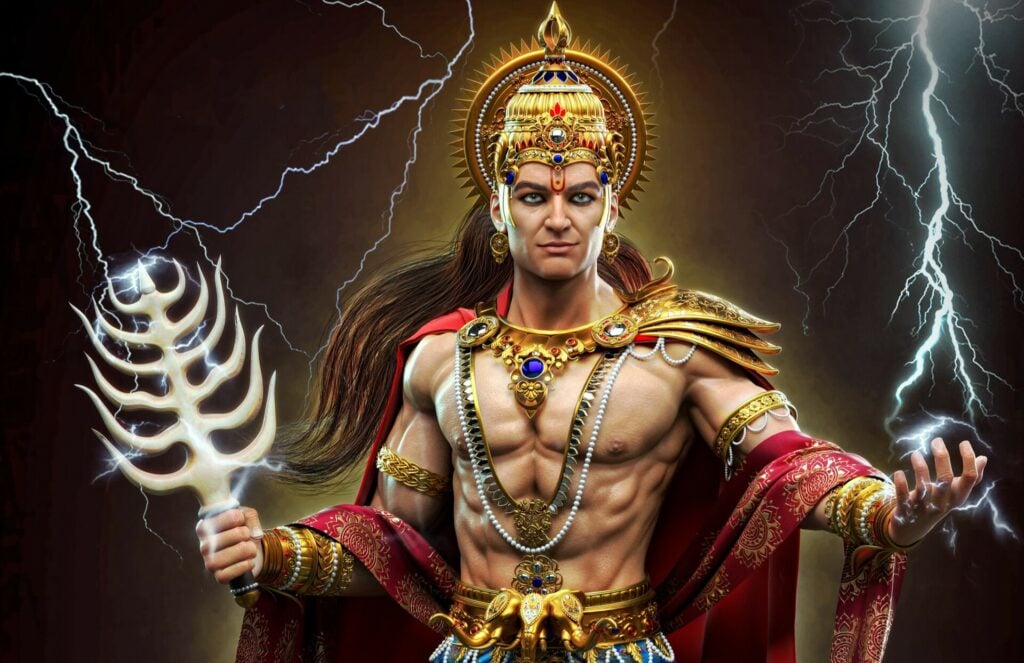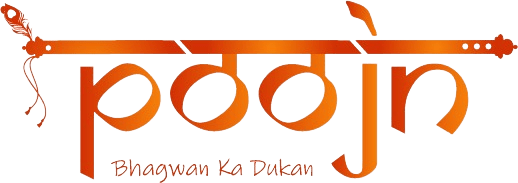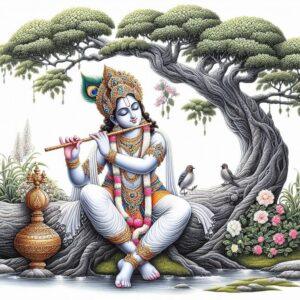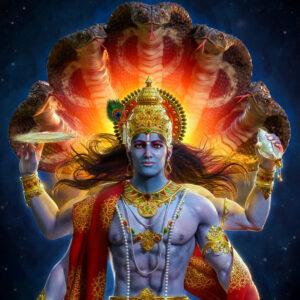
Lord Indra, revered as the king of gods in Hinduism, holds a significant position in ancient Indian Vedic tradition. Known as the god of rain and storms, Indra is worshipped as the bravest of the gods and the bringer of rains. He is depicted as a great warrior who wields a thunderbolt in battles against monsters and conquers the anti-gods (asuras). Lord Indra is also associated with various elements such as the sky, lightning, weather, thunder, storms, rains, river flows, and war.
In Hindu mythology, Lord Indra is depicted with regal splendor, exuding strength and vitality in his robust and youthful form. Adorned with divine ornaments, he reflects wisdom and authority as the king of gods. Indra’s attributes mainly emphasize physical superiority and dominion over the physical world, embodying energy and assertiveness in his actions.
The significance of Lord Indra is vast and varied in Hindu religious texts. He is considered the god of rain and thunderbolt, bringing rain to the earth. Indra is revered as the god of war, courage, and strength, believed to have the power to control the weather and natural elements. He is depicted as a king who leads cattle raids against the dasas or dasyus, the native inhabitants of the lands over which his people roam.
Lord Indra’s prominence is evident in epics and Puranas, where he is hailed as the supreme god in over 300 hymns of the Rigveda. He is recognized as the head of heaven, the abode of all Devas, in later Purana Yuga. Indra’s defeats by asuras are attributed to certain boons.
Common Symbols Associated with Lord Indra
Lord Indra is often depicted with various symbols that represent his powers and characteristics:
1. Holding a thunderbolt or Vajra and a sword: The thunderbolt symbolizes his role as the god of rain and storms, while the sword represents his warrior nature.
2. Shown on top of his elephant Airavata: This symbolizes his characteristic as the King of the Gods.
3. Accompanied by his wife, Shachi: Emphasizes his marital status and family life.
4. Vajra: His most powerful weapon, a lethal thunderbolt used to destroy enemies.
5. Associated with thunder and lightning: Indra is closely linked to these natural phenomena.
6. Vajra represents thunderbolt and diamond: Symbolizes his destructive nature.
Lord Indra’s depictions in Hindu art and scriptures showcase his dynamic presence and iconic symbols. Paintings, sculptures, and temple carvings often portray him holding a thunderbolt and a sword, riding his elephant Airavata, and accompanied by his wife Shachi. These artistic representations serve to highlight his importance as one of the most significant gods in Hinduism, ruling over the high heavens and bringing rain and victory to the Devas.
Commonly Asked Questions about Lord Indra
1. Who is Lord Indra in Hinduism?
Lord Indra is known as the god of rain and storms in Hinduism. He is worshipped as the bravest of the gods and the bringer of rains. Indra is also the king of the devas and Svarga, associated with various elements such as the sky, lightning, weather, thunder, storms, rains, river flows, and war.
2. What are the attributes of Lord Indra in Hindu mythology?
Lord Indra is depicted with regal splendor, reflecting strength and vitality in his robust and youthful form. He is adorned with divine ornaments, symbolizing wisdom and authority as the king of gods. Indra’s attributes emphasize physical superiority, dominion over the physical world, and energy in his actions.
3. What is the significance of Lord Indra in Hindu religious texts?
Lord Indra holds a prominent position among the Vedic Gods and is revered as the head of heaven. He is recognized as the god of rain and storms, bringing rain to the earth. Indra is also associated with various elements such as the sky, lightning, weather, thunder, storms, rains, river flows, and war. His defeats by asuras are attributed to certain boons.
4. What are the common symbols associated with Lord Indra?
Lord Indra is commonly depicted holding a thunderbolt or Vajra and a sword. He is shown riding his elephant Airavata, symbolizing his role as the King of the Gods. Indra is often accompanied by his wife, Shachi. His most powerful weapon is the Vajra, a lethal thunderbolt, and he is associated with thunder and lightning.
5. How is Lord Indra depicted in Hindu art and scriptures?
Lord Indra is depicted in Hindu art and scriptures with iconic symbols that represent his powers and characteristics. These depictions show him holding a thunderbolt or Vajra and a sword, riding his elephant Airavata, and sometimes accompanied by his wife Shachi. These artistic representations highlight his significance as one of the most significant gods in the ancient Indian Vedic tradition.
Please note that the information provided here is based on the given text and existing knowledge of Lord Indra in Hinduism.


